Diablo 3 review
After 12 whole years, a successor to the quintessential dungeon crawler Diablo 2 has finally been released. To put that into perspective, that’s only two years behind Duke Nukem Forever’s development time, longer than Rare’s golden age, and (as of writing this) over half of my life. Will Diablo 3 be as praised, innovative, or even as good as Diablo 2 in 2024? Probably not, but it’s still a pretty good game anyway.
Before we get to the gameplay, I need to discuss a very important aspect of Diablo 3’s accessability. It’s a requirement for playing the game that no game publisher or developer should ever force on their players. In order to play the game, you have to be connected to the Battle.net servers. This means that if you want to play single player, you have to be logged in. You’re connected to a server whether or not you’re playing with friends, so even if you’re playing by yourself, you have to deal with lag. My internet connection is fairly good, and most online games I play have good latency, but Diablo 3 was always stuck around 180-360 milliseconds. That’s absolutely ridiculous. Not any less ridiculous is the fact that every Tuesday is Blizzard’s weekly 8-hour server maintanence, so no matter how many people you want to play with, you can’t. Say you’re playing the game and all of a sudden the servers crap out. Well, tough shit, you’re not allowed to play the game you payed good money for. Blizzard isn’t the first company to do this always-online DRM (Ubisoft being an example, and debatably Valve as well), but this shouldn’t become a publisher trend.
The main reason for all of this is isn’t just an anti-piracy measure (which is more of a “convenient” side effect), but rather the game’s RMAH, or Real Money Auction House. The RMAH allows users buy or sell their items on the auction house, either for real money or in-game gold, with Blizzard taking 15% of the cut. Now, I have no problem with an in-game store for items – if people would rather spend their money on items they could earn for free by investing time into a game they’re going to invest time in anyway, that’s their own decision. How this relates to Diablo 3 being online only is that Blizzard wants to prevent players from using bots or scripts to get items to sell online. To keep players from doing that, Blizzard forces the game to be played online only, meaning that much of the information that would be useful to such hackers is only kept on their servers. If the RMAH didn’t exist, the online-only problem would be solved, but the same economic issues from Diablo 2 would still be present. Personally, I’d prefer to be able to play the game whenever I damn well feel like.
At the very least, the always-online functionality means characters are stored online, so no matter where you play, you can access all your characters. And thankfully Diablo 3 doesn’t have a subscription fee like Blizzard’s MMO franchise World of Warcraft (if that was the case I would never buy it). You also have an item stash that is shared among all your characters, like in Torchlight. Provided you’re willing to jump the stories-high, online-only hurdle, you’ll be treated to a pretty good dungeon crawler action RPG.
As you might expect, Diablo 3 takes place after the events of Diablo 2. Strange occurances signaling an apocalyptic war begin popping up, including the dead rising from their graves and a suspicious comet hitting the earth. You start the game by heading to the comet to investigate, battling Hell’s forces along the way, and spoilerific events unfold from there. Needless to say, however, is that Diablo, the titular lord of terror, is somehow returning after being defeated twice before, and the ultimate goal of the game, as with the last two titles, is to defeat him yet again. You’ll meet familiar faces along the way, including Deckard Cain, the wise old man from the first two games, and new characters such as Leah, Deckard’s neice. Like virtually every other dungeon crawler, you don’t really have to follow the story to play the game effectively, and those expecting a deep RPG story should obviously look elsewhere.
Diablo 3’s core gameplay is based on the foundation set by its predecessors, that being a dungeon crawling, fast paced, loot finding action RPG. The appeal of this genre is in its accessability, where unlike games ranging from the likes of Dungeons & Dragons to even those of The Elder Scrolls, Diablo’s gameplay is very easy to get into. If you can click a mouse, you can play Diablo, and the third installment isn’t much different. Hell, you can play the entire game just by clicking. Moving your character is done just by clicking the mouse where you want to go, you attack by clicking an enemy you want dead, you talk to people by clicking on them, manage items by dragging and dropping, and you can even use skills just by clicking them. As well, the Nightmare and Hell difficulties awarded for beating the game make a return, along with a new Inferno difficulty for the hardest of the core and the baddest of the ass. Since Diablo 3’s general gameplay hasn’t changed much, the remainder of the review will be mostly focused on the changes Diablo 3 makes not only from its predecessors, but also the genre it pioneered.
The most obvious change is that randomly when killing enemies, they’ll drop a health orb. This health orb, as its name implies, will heal you and your party as you walk into it. Early on in the game, this makes it very easy to stay alive, but after a while, running over health orbs at the right time makes it a strategic element of gameplay. Companions are also a bit different. In Diablo 2, you could hire mercenaries to help you in battle, but in Diablo 3, you get specific characters you meet along the way as allies in your fight. You can play solo if you want, but these allies have skills of their own that they trigger when under certain conditions (such as healing you when your health is 50% or less). If you prefer AI partners in single player games, then you might like Diablo 3’s companion system.
In Diablo 3, you have five character classes to choose from – the returning melee slaughterhouse, the Barbarian; a dual crossbow weilding Demon Hunter; the spellcasting RPG staple Wizard, a martial arts zen master Monk; and a Witch Doctor that relies on curses and summoning for combat assistance. Each class plays remarkably different from each other, more so than perhaps any other dungeon crawler I’ve played. Instead of each class having Mana aside from Health and using it differently than others, they each have their own equivalent resource for skills, with different methods of utilizing each one. For example, the Barbarian gains fury by hitting enemies which he can use to activate his skills. The Monk has a similar system with spirit, but it doesn’t decrease from skill neglection, however whereas most of the Barbarian’s non-damaging skills don’t require fury, most of the Monk’s non-damaging skills do use spirit. It’s the game’s many subtle nuances like these that really make gameplay differences between character classes stand out, especially when playing with friends.
Of course, what dungeon crawler would be complete without a set of skills for each class. Diablo 3 takes a huge step in a new direction in the way skills work and are acquired. Previous games in the genre had you spending points you earn by levelling up on a skill tree, but in Diablo 3, you automatically gain access to new skills as you level up. This takes away the satisfaction of investing skill points properly, but there is a good side to this. You still assign skills to hotkeys – Diablo 3 has four skill slots that can be used at any given time. Each and every skill has a series of runes that also unlock automatically from levelling up, but you can only use one rune at a time. These runes modify the skill in some way, such as doing fire damage or increasing its duration. Since you don’t have to invest points and automatically get skills for your class, this makes experimentation way more fun and more accessable than any other dungeon crawler I’ve ever played. I’ll still miss the investment aspect and ability to level up skills, but Diablo 3’s system, as different as it is, is just as good.
That brings me to a disappointing change – levelling up just isn’t satisfying anymore. When you level up, your character sort of explodes an aura of damage that hits nearby enemies as well as fills up your health. Aside from the aforementioned automatic skill unlocks, so too are your attribute points automatically distributed via level up. In fact, the only reason I imagine attribute points still exist is because items modify them, and since not all equipment is class-specific, and the shared stash enables item sharing with your other characters, it makes sense in some cases that one item might be equally useful for two different classes for two different reasons. Regardless, Skyrim proved that putting attribute points in stats to increase other stats is redundant, so the fact that Diablo 3 does it for you is even more redundant.
Speaking of items, not much has changed with Diablo 3’s items themselves, but what would a dungeon crawler be without loot? They still have color-coded ranks and some items need to be identified before use. However, item identification no longer requires scrolls or a visit to Mr. Cain; simply right-click an unidentified item and in a few seconds, bing, it’s identified. Same goes for town portals, which also required scrolls. After completing a specific quest, your character gains the ability to return to town whenever you want. This takes out another redundancy of buying scrolls that are used so often, they’re always in your inventory anyway. And speaking of inventory, item management is no longer a puzzle game (so to speak). You have a 6×10 grid inventory, and no item is ever larger than two blocks, making inventory management much more streamlined and less of a hassle to organize.
But say you have an item you don’t need or don’t want. You don’t think it’ll sell on the RMAH and it doesn’t sell for much gold from a merchant. Diablo 3 introduces a crafting system like none other I’ve seen in a dungeon crawler. If there’s an item you don’t want, you can salvage it for materials that you can then use to craft weapons and armor yourself. The only catch is that an item has to be magical in order to be salvaged, so there’s even less of a reason in picking up standard white-colored items. You can spend gold to level your blacksmith to gain access to better items, which require more materials and higher level requirements. This can get fairly addicting, you might even find yourself crafting the same item multiple times to try to get better equipment. It’s nice to have an option other than selling items you don’t need, but to make it fun is a bonus.
Playing multiplayer, like any good dungeon crawler, increases the fun dramatically. You no longer have to fight over loot, as each player sees their own loot when dropped by enemies. This makes trading with others more encouraged, and you can also be greedy and sell or craft items your friends might be able to use without them even knowing. However, multiplayer does have its drawbacks. A common problem that hasn’t been addressed at all since the genre was born is a situational one. Say your friend has one level 20 character, and you have a level 40. Your best option to play together is to start new characters, but then, you each to get to level 30 and another friend who just bought the game wants to play. Adding more friends to the mix makes this all the more confusing and annoying to deal with. Diablo 3 doesn’t do anything about this, but maybe there’s just nothing they could do.
And of course I can’t forget the graphical aspects of the game either. To be fair, Diablo 3 looks a bit dated, even on high graphics settings the game lacks polygonal, texture and shading detail. Its interface, however, looks really crisp and scales well on any resolution. There is still the matter of the game’s visual style, which many claim doesn’t look much like Diablo at all, and while I can agree, I will still say that the game looks unique in its own right. What’s really annoying is that there are considerable lag spikes you do certain actions after launching the game. Hitting an enemy, using a skill, or loading up new areas often lags for a moment or two before running smooth every time afterward. It wouldn’t be a problem if it didn’t happen so frequently. Regardless, Diablo 3 should still be easily playable on mid-range systems.
Aside from all of its new additions and changes, the sad truth is that deep down, Diablo 3 is really still the same old dungeon crawler game. When it comes to actual gameplay, it can be summarized with one word: clicking. Sure, Diablo is and never was as deep or epic as other RPGs out there, but that doesn’t mean it’s any less fun. It’s also great to play multiplayer since you’re going to have to be online to play it anyway. I’ll never forgive Blizzard’s decision to make the game online-only, but dammit this junk food is too delicious for me to quit eating.
4 out of 5
Categories: Reviews
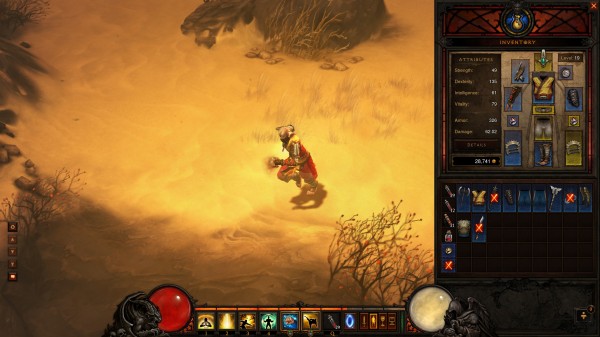
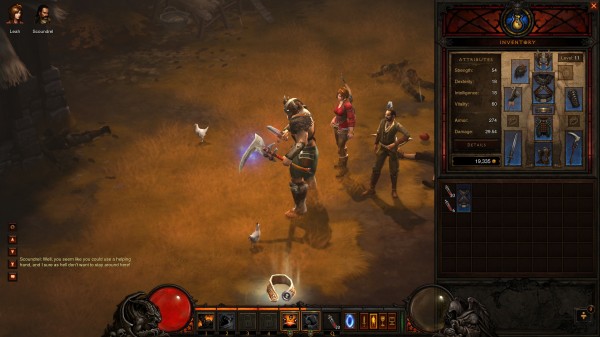
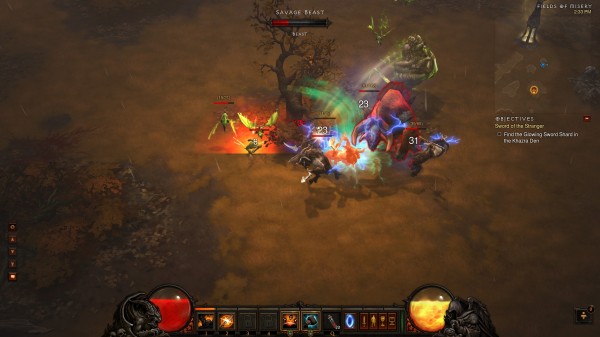
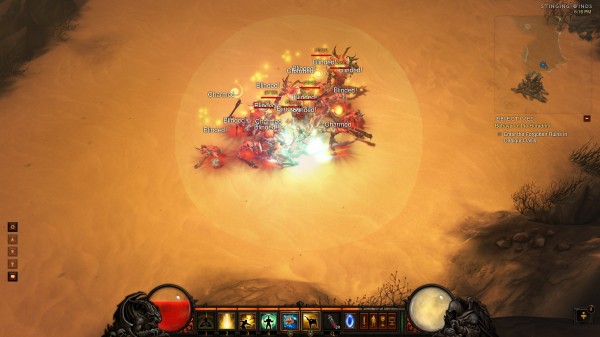
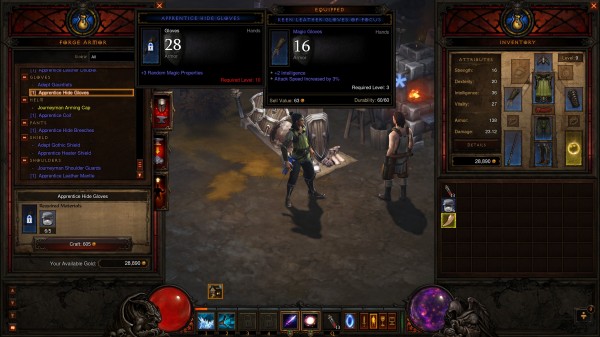
0 Comments
This post has been left all alone with no comments. Don't leave it lonesome - give it some company with a comment.